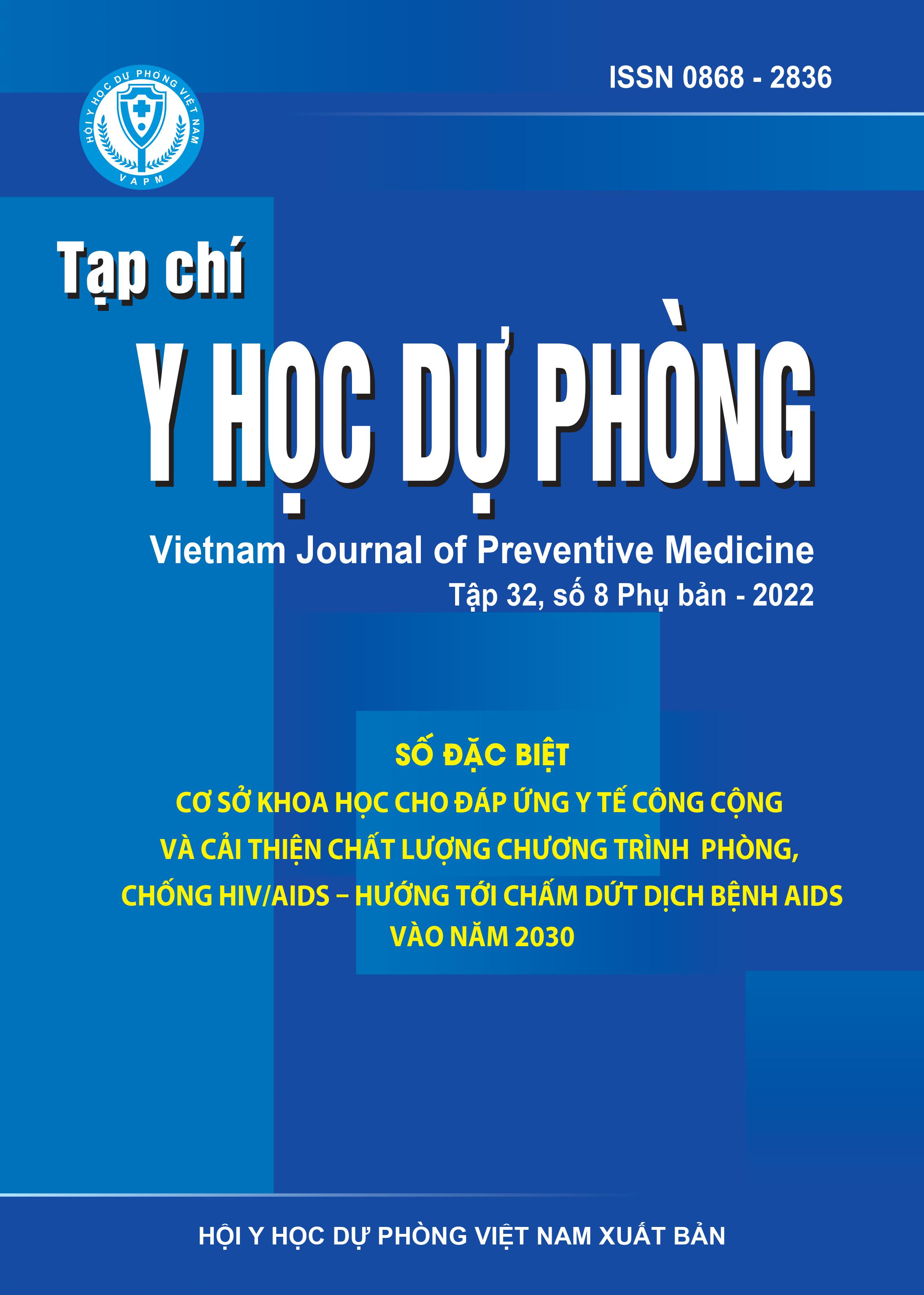HIV viral load suppression and some associated factors among people living with HIV on antiretroviral therapy in Ho Chi Minh City during, 2020 - 2021
DOI:
https://doi.org/10.51403/0868-2836/2022/899Keywords:
Viral load suppression, HIV, ART, treatment adherenceAbstract
This study aimed to determine the viral load (VL) suppression and describe some associated factors among HIV-infected people, thereby helping to evaluate the effectiveness of ART treatment in Ho Chi Minh City (HCMC). A cross - sectional study was conducted from July 2020 to July 2021 on 16,278 patients who had the VL results in this period. The results showed that the proportion of achieving VL suppression (< 1.000 copies/ml) was 98.6%. HIV-infected people who were men having sex with men, or who were partners of highrisk people had a higher likelihood of having VL suppression than those who inject drugs (PWIDs) (AOR: 2.04, 95% CI: 1.32 - 3.17); (AOR: 1.84, 95% CI: 1.29 - 2.62). People with a duration of ART from 2 - < 5 years, or ≥ 5 years were more likely to achieve VL suppression than those on 1 - < 2 years of ART (AOR: 1.74, 95% CI: 1.08 - 2.80); (AOR: 1.61, 95% CI: 1.01 - 2.57). In addition, a higher likelihood of achieving VL suppression was found in those initiated ART at early clinical stages I and II
(compared to III and IV) (AOR: 5,89, 95% CI: 4.06 - 8,55), and those with good adherence to ART (AOR: 3.40, 95% CI: 2.29 - 5.03). Therefore, antiretroviral treatment programs need to promote the connection of early ART, and counseling on treatment adherence for HIV-infected people, especially for PWIDs, thereby helping to increase the proportion of HIV viral load suppression in HCMC.
Downloads
Downloads
Published
How to Cite
Issue
Section
License
Publication License No 150/GP-BTTTT signed on May 8, 2014;
Electronic Publication License No 322/GP-BTTTT signed on June 15, 2016.


